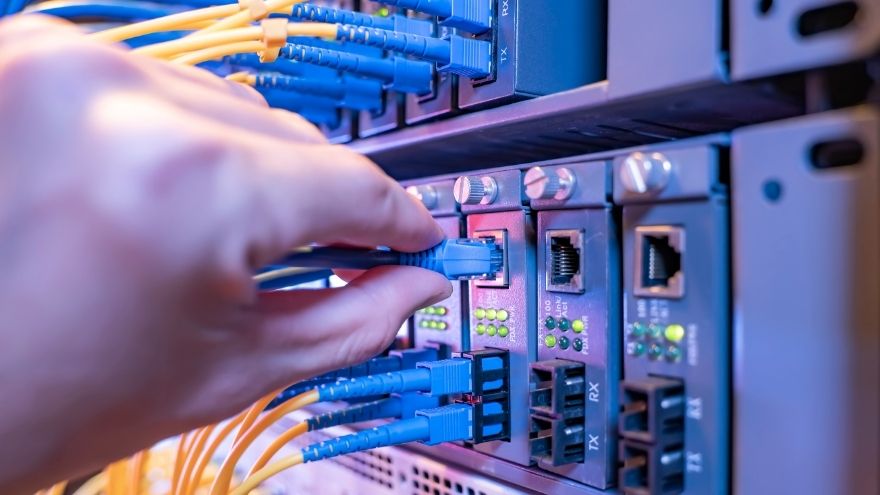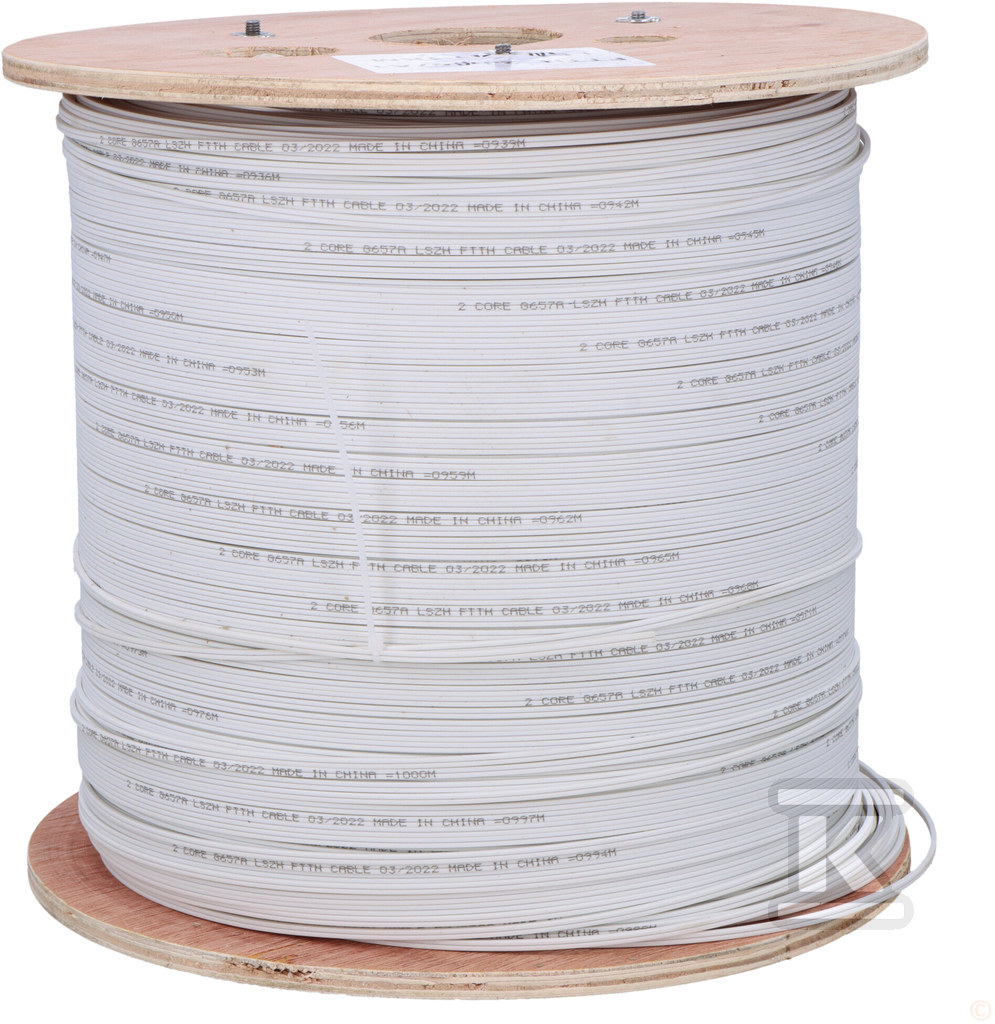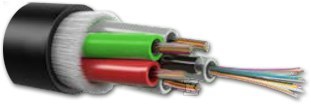Connecting your router to the internet using fiber optics is a solution that guarantees fast signal transmission and a stable connection. However, choosing the right cables requires knowledge of several important parameters. What are the types of fiber optic cables? What are the differences between Ethernet cable, telephone cable, and fiber optic cable? What parameters should be considered to match the cable to the router's power?

Check out the fiber optic cables at the Onninen wholesaler
Categories of Fiber Optic Cables for Connecting a Router
Fiber optic cables are divided into several categories, which differ in design and application. When choosing a network cable to connect a router, you should consider its type and technical specifications.
Types of fiber optic cables:
- Single-mode (SMF) – Used in networks to transmit signals with minimal interference over long distances. Single-mode fiber provides a data transmission speed of 100 M/s or 1 G/s, and its range can be at least 5 kilometers. ;
- Multimode (MMF) – Multimode Fiber is designed for use within a specific area, such as a connection between a router and devices in a home or office.
 Each of the listed cable types differs in core diameter, light transmission method, and maximum permissible cable length. This last parameter in particular has a significant impact on the speed at which the network cable will operate in a home or office network.
Each of the listed cable types differs in core diameter, light transmission method, and maximum permissible cable length. This last parameter in particular has a significant impact on the speed at which the network cable will operate in a home or office network.
As a rule, the better quality cables we use for IT networks , the more efficient and interference-free signal transmission will be.
It is worth explaining that the Ethernet and telephone cables used here and there differ from fiber optics in terms of data transfer technology. Fiber optic cable uses light to transfer information, which guarantees higher speed and less susceptibility to interference compared to copper wires.
Differences in data transfer technology:
- Ethernet cable transmits data using electrical pulses, which limits speed over longer distances, regardless of the type of Ethernet cable used;
- The telephone cable is designed mainly for voice transmission, so its technical parameters are insufficient for modern Internet networks .
It should be noted that these types of cables are a common cause of interference or low signal levels, and connecting computers to the router in this way does not work with optimal performance.
How to match fiber optic cable to router power?
 To properly match the fiber optic internet cable to the router's power, you should check the device's technical specifications. Each device offers a specific data transfer speed, provided by the manufacturer in maximum ranges. In other words, the internet connection to the router will be fully satisfactory, the higher the parameters of the installation itself, which can only be provided by fiber optics .
To properly match the fiber optic internet cable to the router's power, you should check the device's technical specifications. Each device offers a specific data transfer speed, provided by the manufacturer in maximum ranges. In other words, the internet connection to the router will be fully satisfactory, the higher the parameters of the installation itself, which can only be provided by fiber optics .
In short, the investment in the connection between the network, router, and computer should be made using optical fiber, which is really not worth saving on when using ICT devices.
Some tips for selecting a cable for your router:
- Check whether your router supports single-mode or multi-mode fiber;
- Make sure the cable length matches the distance between the router and the access point;
- Choose a fiber optic cable that is resistant to mechanical damage, especially in outdoor installations;
- Consider shielded twisted pair ftp cables (ftp cables) for systems requiring high security.
What method of securing a fiber optic cable should I choose?
 Securing the fiber optic cable is extremely important to ensure the durability of the installation and protection against interference.
Securing the fiber optic cable is extremely important to ensure the durability of the installation and protection against interference.
For this purpose, the following solutions are recommended:
- Fiber optic conduit – Flexible protective tubes that protect the fiber optic cable against moisture, UV radiation and mechanical damage;
- Shielded twisted pairs ftp – They are used to reduce the impact of electromagnetic interference on transmitted data. Shielding involves surrounding the conductor with a special foil or braid, which minimizes signal losses. This type of twisted pair is a solution recommended by specialists in demanding environments (e.g. industrial installations).
When choosing fiber optic cables for a router, you should consider the type of cable, its length, and the router's technical specifications. Additionally, it is worth investing in appropriate protections, such as fiber optic conduit or shielded FTP twisted pairs, to ensure the reliability of the installation.
If you are looking for high-quality fiber optic cables and installation accessories, check out the Onninen wholesale offer . Thanks to the wide range, you can find solutions tailored to your needs.